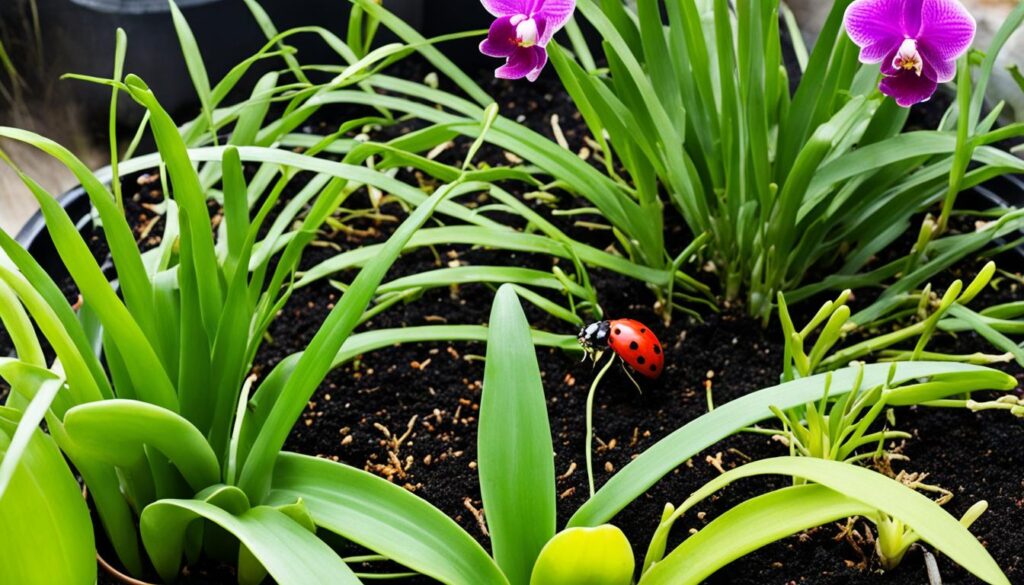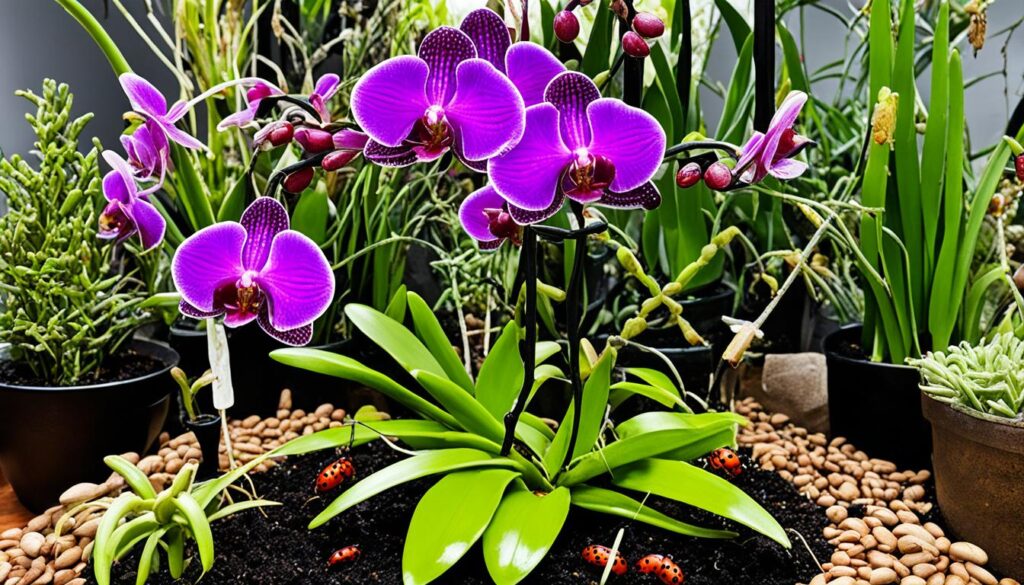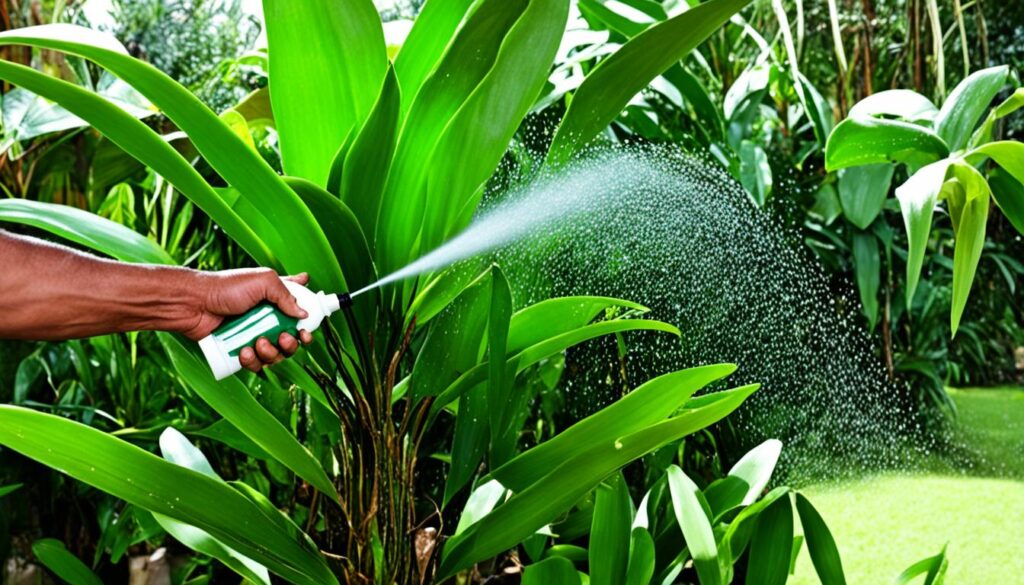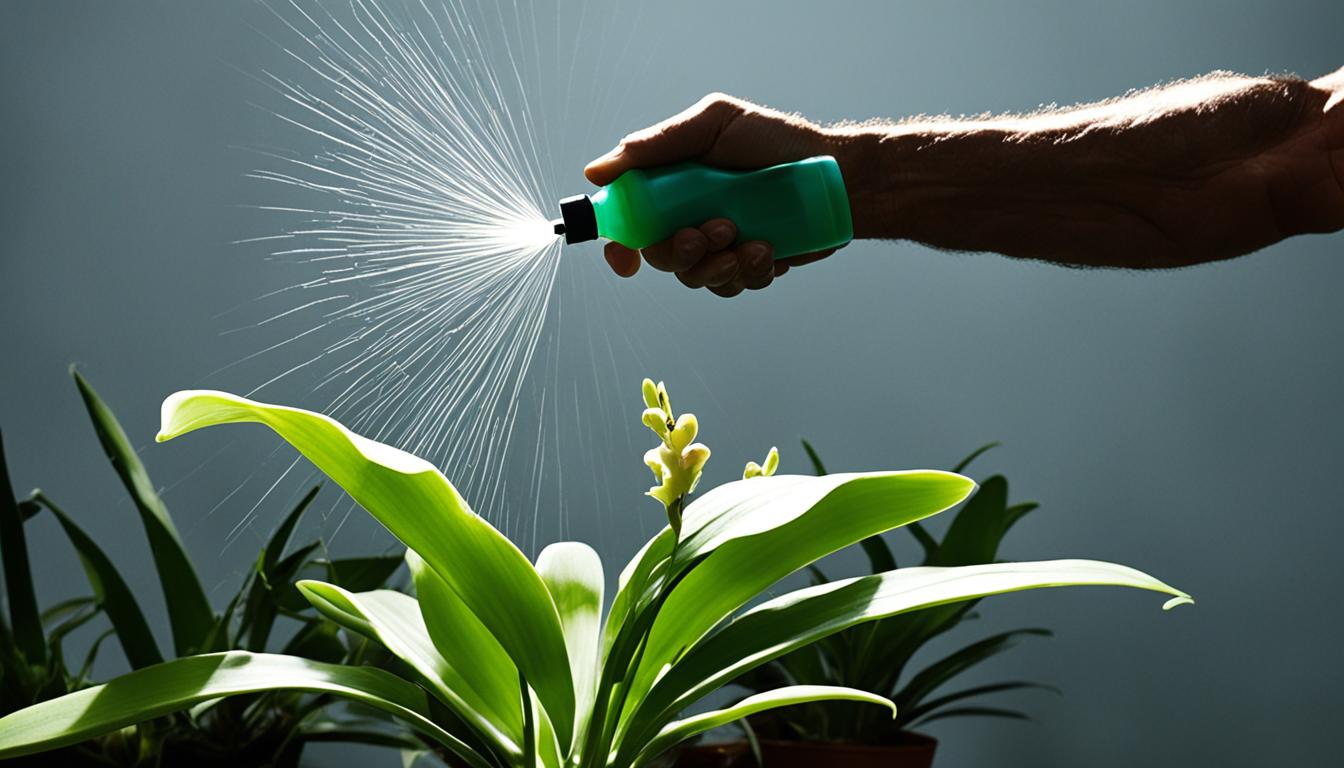As a keen orchid enthusiast, I have long admired the sophistication and diversity these plants bring to my home and garden.
Among the various types, such as Cattleya, Phalaenopsis, and Oncidium, there lies a common challenge: the unwelcome presence of common orchid pests.
These pests, which include aphids, mealybugs, scales, twospotted spider mites, and thrips, can cause everything from disfigurement of leaves and flowers to stunted growth, threatening the very vivacity that captivates our senses.
Understanding and implementing orchid pest control is thus paramount. In this pursuit, I have gathered a wealth of knowledge and techniques to effectively combat these pests.
And I’m eager to share these insights aimed at getting rid of orchid pests to ensure others can also preserve the beauty and health of their cherished orchids.
Key Takeaways
- Educating yourself on the types of pests is critical for successful orchid care.
- Timely detection is key to preventing significant damage to orchids.
- Natural remedies and pest control strategies can effectively manage infestations without resorting to harsh chemicals.
- Maintaining a clean growing area can help deter pests from taking up residence in your orchid collection.
- Quarantining new plants before introducing them to your garden is a proactive step in reducing the risk of infestation.
- Optimal growing conditions are your best defense against common orchid pests.
- Regular plant inspections are essential for early detection and control of orchid pests.
Identifying Common Pests Affecting Orchids
As an orchid enthusiast, my experience has taught me that identifying orchid pests early on is essential to safeguard these exquisite plants.
Recognizing signs of an orchid pest infestation is the first critical step toward keeping your orchids vibrant and healthy.
Let’s delve into the symptoms and indicators of the most common pests affecting orchids.
Symptoms and Signs of Aphid Infestations
Aphids are among the peskiest offenders in the orchid world. These tiny insects tend to cluster on new growth and the undersides of flower buds.
If you notice your orchid’s leaves beginning to curl or take on a yellowish hue, it’s wise to inspect for these soft-bodied culprits.
They’re not just unsightly, they can also transmit viruses that can further harm your orchid.
Scale Insects: Hard vs. Soft
Scale insects come in two varieties: hard and soft. The hard scales present as tiny, immovable brown spots on leaves and stems, whereas the soft ones may appear as small, cottony patches.
Both types suck on plant juices, and a severe infestation can lead to yellowing leaves and their subsequent drop.
The Boisduval scale, specifically, has gained notoriety for its impact on the Cattleya orchid species.
Recognizing Twospotted Spider Mite Damage
Twospotted spider mites are another threat to orchid health, often detected by a tell-tale stippled pattern they leave on the leaves as they feed.
These microscopic pests can rapidly increase in number, especially in warm, dry conditions.
Regular misting can help prevent their spread, but once established, they’re a force to be reckoned with.
Detecting Thrips in Your Orchids
Thrips are known for their ability to deform orchid flowers, resulting in streaked or silvery petals.
Detecting these thin, winged insects can be challenging as they hide within the blossoms and buds.
A gentle puff of air into the blooms or a shake onto a white surface can dislodge them, revealing their presence and allowing you to take action.
Proper identification of these pests is the cornerstone of effective orchid care. Whether you’re new to orchids or have years of experience, being vigilant about these common pests will help you enjoy your orchids in their full splendor.
Orchid Pest Control: Natural Remedies and Best Practices
As an avid orchid grower, I’ve found that implementing orchid pest prevention strategies can be simple yet highly effective.
The first line of defense in orchid pest management is often the most straightforward: vigilance in our daily care practices.
For example, routinely inspecting your orchids allows you to catch pests early and employ timely interventions.
One such intervention is the use of water sprays, with a forceful stream, you can dislodge many pests from your plants.
Another tool in the toolkit is rubbing alcohol; a cotton swab dipped in alcohol can be used to remove pests like aphids, mealybugs, and mites hiding in the nooks of your orchids.
- Natural Oils: I’ve consistently seen positive results using horticultural and neem oils. These oils act as natural insecticides and miticides, offering an environmentally friendly approach to pest control.
- Insecticidal Soaps: They’re a go-to for many gardeners as they effectively suffocate pests without triggering the development of pest resistance.
- Biological Control: Introducing beneficial insects that prey on harmful orchid pests can help manage pest populations without chemical reliance.
For instance, ladybugs are excellent at controlling aphid populations, while predatory mites can manage spider mite infestations.
However, the key to success with these natural remedies for orchid pests is consistency and patience.
It might take some time to see a significant reduction in pest populations, but these methods help maintain the health and beauty of orchids safely and effectively.

In conclusion, while chemical treatments are available, these natural alternatives can be softer on our beloved orchids and the environment.
Regular application and adherence to these practices will foster a thriving orchid garden that is both lush and pest-resistant.
Preventing Orchid Pests: Proactive Measures for Healthy Orchids
Embracing a proactive stance in preventing orchid pests is vital to maintaining the health and splendor of your orchid collection.
Adequate measures, such as quarantining new additions and fostering an inhospitable environment for pests, are indispensable for orchid pest management.
Let’s delve into the practical steps you can implement to keep your orchids thriving and pest-free.
Importance of Quarantine for New Plants
As a passionate orchid enthusiast, I understand the excitement of introducing new plants to your collection.
However, skipping the quarantine process can inadvertently invite pests to your greenhouse or orchid space. Before integrating new orchids, I always quarantine them for at least two to three weeks, monitoring for any signs of pest activity.
This simple yet critical step is a cornerstone in orchid pest prevention strategies, ensuring that existing plants remain unaffected by potential new threats.
Optimizing Growing Conditions to Deter Pests
To deter pests naturally, I focus on providing my orchids with the ideal growing conditions.
Correct light, temperature, humidity, and water are not just conducive to growth; they also play a pivotal role in minimizing stress on the plants, which can otherwise make them more susceptible to pest infestations.
Orchids that are strong and healthy are less likely to fall victim to an onslaught of pests.
Regular Cleaning and Maintenance to Avoid Infestations
A crucial component of my orchid pest management regimen is regular cleaning and maintenance of the growing area.
I meticulously remove fallen leaves and spent blooms, as well as refresh the potting medium to prevent the accumulation of organic debris that could harbor pests.
This preemptive cleaning routine is integral to preventing orchid pests and contributes to a beautiful, hygienic display of orchids.

| Task | Frequency | Purpose |
|---|---|---|
| Inspect new plants | Daily during quarantine | Early detection of pests |
| Check plant health | Weekly | Monitor for stress signs |
| Clean growing area | Monthly | Eliminate potential pest habitats |
| Refresh potting media | Biannually or as needed | Prevent fungal growth and pest sheltering |
Focusing on these simple, effective techniques has significantly reduced pest-related issues in my orchid care routine.
By implementing these preventative strategies, orchid growers can effectively manage their collections, enjoying the beauty of these exotic plants without the constant battle against pests.
Getting Rid of Common Orchid Pests
Orchid enthusiasts understand that orchid pest infestation is not just a mere inconvenience; it’s a threat to the vitality and aesthetic of their prized plants.
My personal exploits in orchid pest control have taught me the value of timely and effective action.
The journey of getting rid of orchid pests involves a combination of perseverance, knowledge, and the strategic use of various eradication methods.
Upon confirmation of a pest presence, my initial approach is straightforward: isolate the affected plant to prevent further spread. It’s then that I employ a soft touch; a gentle, yet firm stream of water can often dislodge the softer-bodied pests like aphids and mites.
This is followed by fastidious manual removal of any stubborn intruders using tweezers or a soft cloth.
When these methods prove insufficient, I turn to carefully selected insecticides, always ensuring they are formulated to be safe for orchids.
Application is an art in itself, targeting the lifecycle stages where pests are most vulnerable, like the early crawler stage of scales, to maximize impact and reduce the need for reapplication.
We must always be mindful that our interventions are but one part of a holistic pest management strategy. Consistent preventive measures are my key allies in making orchids less hospitable to pests in the long term.
- Inspect plants regularly for early signs of pests
- Quarantine new plants before integrating them into your collection
- Improve air circulation around the plants
- Keep the area clean, free of plant debris and excess moisture
Let’s discuss the common types of insecticides and their targets:
| Insecticide Type | Target Pest | Application Notes |
|---|---|---|
| Horticultural Oils | Aphids, Mealybugs, Mites | Apply during cooler hours to prevent leaf burn. |
| Insecticidal Soaps | Thrips, Whiteflies | Thorough coverage is essential for effectiveness. |
| Systemic Insecticides | Scales, Borers | Use with care; follow label for specific orchid instructions. |
The battle against orchid pests is ongoing, but with the right approach, it is one we can win.
Remember, a flourishing orchid is a testament to the dedication and care of its keeper.

Conclusion
In my journey as an orchid enthusiast, I’ve learned that vigilance and knowledge are instrumental in the fight against common orchid pests.
These pests, including the notorious aphids, scales, spider mites, and thrips, pose a continuous threat to the health and aesthetics of our cherished orchids.
Effective orchid pest control hinges on the ability to identify these tiny invaders, take preventative measures, and intervene promptly should an infestation occur.
Remember, battling pests is not a one-off task but an integral part of the routine care for your orchid collection.
My experience has taught me that an ounce of prevention is worth a pound of cure, especially when it comes to preventing orchid pests. By fostering a clean environment, ensuring optimal growth conditions, and conducting regular inspections, the chances of pests invading your orchids are greatly reduced.
Whether you prefer using cultural practices, natural remedies, or the careful application of chemical treatments, the goal is always to safeguard your orchids from damage while promoting their vibrant growth and bloom.
As fellow aficionados of these exotic plants, I advise staying informed and attentive to the needs of your orchids. Doing so not only allows you to enjoy the splendor of a pest-free orchid display but also empowers you to act as a steward of these delicate flora.
By maintaining a strong defense against common orchid pests through strategic orchid pest control and persistent prevention efforts, you stand a solid chance of cultivating a resilient and flourishing orchid collection for many years to come.
FAQ
What are the most common orchid pests I should be aware of?
The most common orchid pests include aphids, mealybugs, scales, twospotted spider mites, and thrips. These pests can cause significant damage to orchids, such as disfigured leaves and flowers, stunted growth, and reduced blooming.
How can I identify if my orchid has an aphid infestation?
Look for leaves that are curling or turning yellow, especially around new growth and flower buds. Aphids tend to cluster in these areas. You might also see a sticky substance called honeydew, which can lead to sooty mold.
What’s the difference between hard and soft scale insects on orchids?
Hard scales have a protective shell-like covering and are more challenging to control once they attach to the plant, while soft scales are smaller, do not have the same type of covering, and can produce honeydew. Both types suck juices from orchid plants, causing damage.
How can I recognize twospotted spider mite damage on orchids?
Look for a stippled or mottled appearance on the leaves, fine webbing, and possibly yellow or bronze tints on the foliage. Severely infested leaves may turn brown and die. A white sheet of paper can help you detect these tiny pests when you shake a leaf over it.
How do I detect thrips in my orchids?
Thrips are tiny, so they can be difficult to spot, but you may notice streaking, silvery patches, or small black dots (which is their waste) on flowers and leaves. Gently blowing into the flowers can sometimes reveal these pests hiding within.
What are some natural remedies for managing orchid pests?
Natural remedies for orchid pest management include hand-picking, using water sprays to dislodge pests, alcohol treatments to dissolve their protective coatings, and applying horticultural oils or insecticidal soaps. Introducing beneficial insects that prey on orchid pests can also be an effective strategy.
Why is it important to quarantine new plants?
Quarantining new plants is crucial because it prevents the introduction of pests to your existing collection. Isolating new orchids allows you to monitor them for pests and treat any issues before placing them near other plants.
How can I optimize growing conditions to prevent orchid pests?
Provide your orchids with the right amount of light, water, humidity, and temperature. A healthy plant is less susceptible to pest infestations. Also, ensure that the air circulation is adequate to deter pest breeding and establishment.
What regular cleaning and maintenance practices can help me avoid orchid pest infestations?
Regularly remove dead or dying plant material and old potting media that can harbor pests. Clean any tools and containers used in orchid care to prevent the spread of pests and diseases, and keep the growing area tidy and free of debris.
What should I do if I discover a pest infestation on my orchids?
Begin with non-chemical methods such as manual removal and water sprays. If the infestation persists, consider using orchid-safe insecticides, targeting vulnerable stages of the pests, and continue with preventative measures like maintaining optimal growing conditions and good sanitation practices.


Leave a Reply